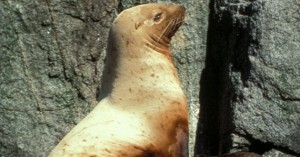FOR IMMEDIATE RELEASE
In the first survey since 2005, the number of Steller sea lion (SSL) pups counted on rookery trend sites increased roughly 10% throughout the US range of the endangered western segment of the population. The National Marine Fisheries Service (NMFS) reported preliminary results from surveys conducted this summer to count SSL pups this week at meetings at the Alaska Fisheries Science Center in Seattle.
“This is good news,” said Dave Benton, executive director of the Marine Conservation Alliance. “The Steller sea lion is an iconic species and its health and restoration is important to all of us. The long term trend seems to be for the population to be stable or increasing for most its range.”
The National Marine Fisheries Service (NMFS) is currently evaluating whether the commercial fisheries in the Gulf of Alaska and the Bering Sea may be jeopardizing the survival of the SSL or adversely impacting its critical habitat.
Based on the assessment of two federal panels, it remains unknown whether climate change, killer whale predation or commercial fishing may have caused the decline or may be hindering recovery of the Steller sea lion. NMFS is expected to make its initial determination of whether commercial fishing is adversely impacting the SSL by next March. If a negative finding is made, the commercial fishing industry could be subject to additional and costly restrictions.

In 2008, NMFS conducted counts of adult and juvenile animals in the western SSL population, and reported that the population was stable or increasing in most of its range. The exception was the far western Aleutian Islands where the population continues to decline.
“With the exception of the far western Aleutian Islands, the population of Steller sea lion adults and juveniles appears to be increasing or stable throughout most of their range. Now NMFS reports a similar increase in pups as well. With this new information we are hopeful the National Marine Fisheries Service will determine that no new restrictions on commercial fisheries are needed to protect Steller sea lions or their habitat,” Benton said.
Most of the pup population increases were seen in the Eastern Aleutians where most of the
Bering Sea fishery occurs, in the Western Gulf of Alaska and around Prince William Sound. The
pup populations increased slightly in the Central Gulf with significant increases in two large
rookeries near Kodiak. However, pup production continued to decline in the Western Aleutian
Islands and in parts of the Central Aleutian Islands west of Adak where adult populations have
continued to decline as well.
NMFS is conducting its review of Alaska’s commercial fisheries, and their impacts on the western population of SSLs, under provisions of the Endangered Species Act (ESA). The western segment of the SSL population was determined to be endangered by the National Marine Fisheries Service in the early 1990s. In 1998 some fisheries were determined to potentially endanger the SSL and so were severely restricted. In 2001, with modified regulations in place, the fisheries were found not to endanger SSL or their habitat. In 2008, NMFS completed a Recovery Plan for SSLs, which set out goals and criteria for recovering the species. This review, called a Biological Opinion, is the first one completed by the agency since the SSL Recovery Plan was published. The draft Biological Opinion is expected to be released in March of next year.
The increases in pup production occurred in the same general areas where adult and juvenile population counts increased last year. The agency also completed a pup count for the eastern
segment of the SSL population. The eastern segment is considered a separate population and is
designated “threatened” under the ESA. The eastern segment has been growing steadily over the past several years, and the recent counts confirmed this trend.
***
The Juneau-based Marine Conservation Alliance is a coalition of seafood processors, harvesters, support industries and coastal communities that are active in Alaska fisheries. The MCA represents approximately 75 percent of the participants in Alaska shellfish and groundfish fisheries and promotes science based conservation measures to ensure sustainable fisheries in Alaska. For more information, click on http://www.marineconservationalliance.org/
